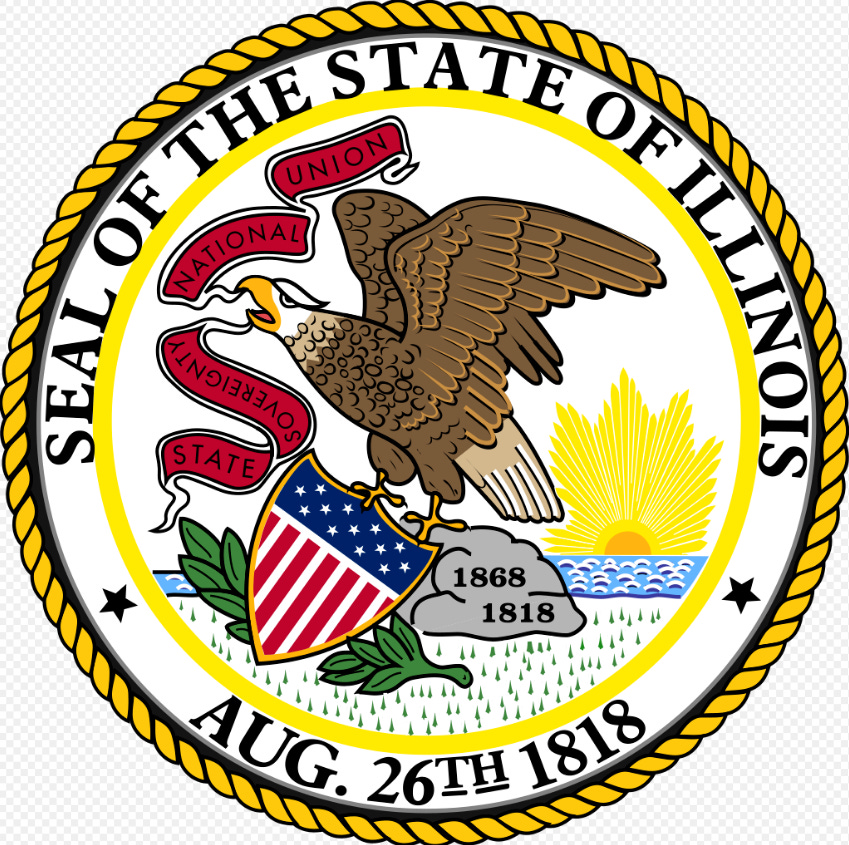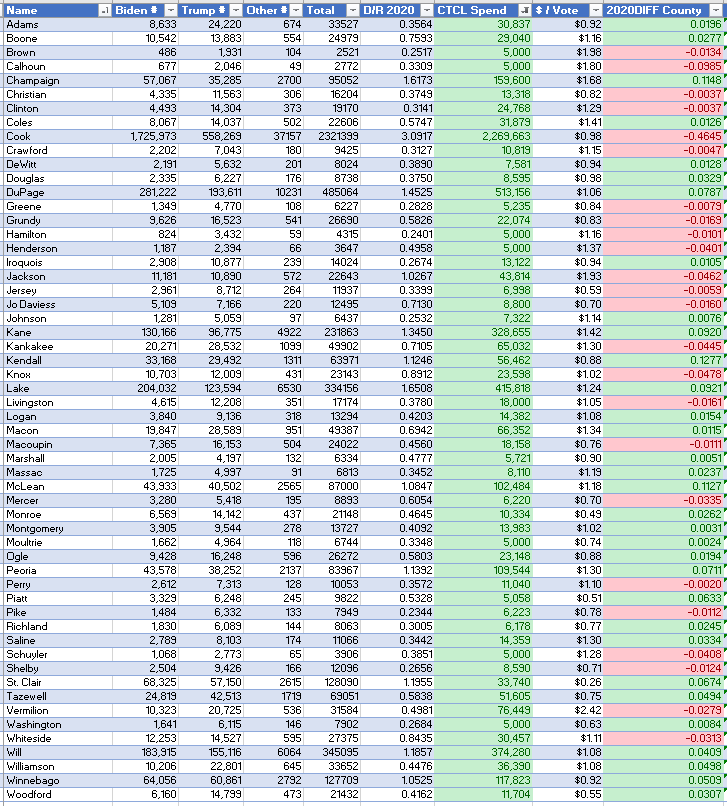Introduction
Question: Is CTCL misrepresenting the information on the IRS Form 990 stating that the PURPOSE of the grants were to help support the SAFE administration of public elections during the Covid-19 pandemic?
Background
This is Part XXIII in The NGO Project series which examines the role NGOs had in determinative outcomes in the 2020 Presidential Election. In prior articles, I focused on the effect CTCL had on AZ, CO, CT, GA, IA, ME, ME, MI, NC, NH, NJ, NM, NY, OH, PA, RI, TX, UT, VT, VA and WI.
This article will solely focus on CTCL in Illinois (IL).
Calculation Basis
The calculation basis was previously explained in detail here. In this article, I do make one adjustment and that is to calculate the 2020DIFF factor by weighted average rather than arithmetic average.
Analysis
56 of 102 IL counties (55%) received CTCL grants.
Total votes cast in CTCL counties were ~ 5,080,551 (83%) and NonCTCL counties were ~ 952,887 (17%). To state it a different way, on a per county basis, CTCL had the opportunity to influence 83% of IL voters.
The total amount of grants to IL was ~ $5,311,518 and the value of individual grants ranged from ~ $5,000 to $2.3MM.
This table includes the top 5 CTCL grants by county. IL is all about Cook County…..
$3.9MM of the grants (78%) were focused in the 5 counties above. The $/vote spent by CTCL in these five counties range from $0.98/vote to $1.42/vote (all parties). The vote totals in these 5 counties account for ~62% of the votes in IL.
To state that a different way, ~78% of the grants were spent on ~62% of the total votes cast in IL.
The average 2016 D/R ratio for CTCL Counties was 0.654 (not weighted). The average 2016 D/R ratio for NonCTCL Counties was 0.482 (not weighted). This means that CTCL grants were provided to more D leaning counties.
The top 5 counties in terms of grants had an average 2016 D/R ratio of 1.78….big time D areas for sure. This is ~4x the NonCTCL county average in 2016. More bias in favor of D.
To continue on this track, if you look at all the counties in 2016 that had a D/R ratio of less than one (R leaning counties), there were 90 (85%) counties. On a per county basis, IL is a big time R state. In total, they received ~ $945,000 in grants in 2020. This is a stingy ~ 16% of the total 2020 CTCL grants in IL. These counties contributed ~1.7MM votes (all parties) in 2016 which is 28% of the vote total.
To put it a different way, 16% of the 2020 CTCL grants went to counties where 28% of the votes were cast in 2016 in NonCTCL counties. These were heavy R counties. More bias in favor of D.
The top 5 R leaning counties (lowest D/R) in 2016 that received CTCL (~$37,000 a pittance) money in 2020…..
Do these facts alone confirm or disapprove my thesis that the grants were NOT used for public safety?
2020DIFF Calculated with Weighted Average
For this analysis, I used a slightly different way to calculate the 2020DIFF using a weighted average based on total votes in a county. This is what it looks like.
w = Total County Vote / Total State Vote
a = D/R2020 - D/R2016 (for CTCL Counties)
a' = a * w (per county)
2020DIFF = sum(a'1:a'n)
This method in theory permits a better correlation for D vote harvesting because it is weighted for counties with higher vote totals.
The 2020DIFF for CTCL counties is effectively -0.181 and for NonCTCL counties is a whopping 0.040. This means that the CTCL D vote harvesting factor in CTCL counties is negative which means a D vote harvesting factor of 0.
Why such a weird result compared to other states?
Illinois is all about Cook County and in 2020 there was a big shift, the largest in the state, to R voters in the ratio equivalent to -0.465. This effectively makes the overall state 2020DIFF average negative. Without Cook County, the 2020DIFF (non-weighted) would be ~ 2% D harvesting factor across all of the other counties.
These are all of the CTCL counties.
Noteworthy R Trending Stalwarts
These are the top 5 R stalwarts in terms of -2020DIFF which indicates higher R turnout as a ratio to D between 2016 and 2020. 2 of the 5 received CTCL grants. Cook County shows up on this list!
Conclusion
CTCL issued ~$5.3MM grants in IL. Because Cook County dominates the state so much in terms of votes and because the 2020DIFF was very negative for Cook, I am not able to calculate a D harvesting factor in IL with this model.
References
CTCL IRS Form 990 (revised form from Jan 2022 used)
Telegram - https://t.me/electiondataanalyzer
Truth - @ElectionDataAnalyzer
The math here is simple, try this on your own. It is a model to look for trends, not an exact science.








